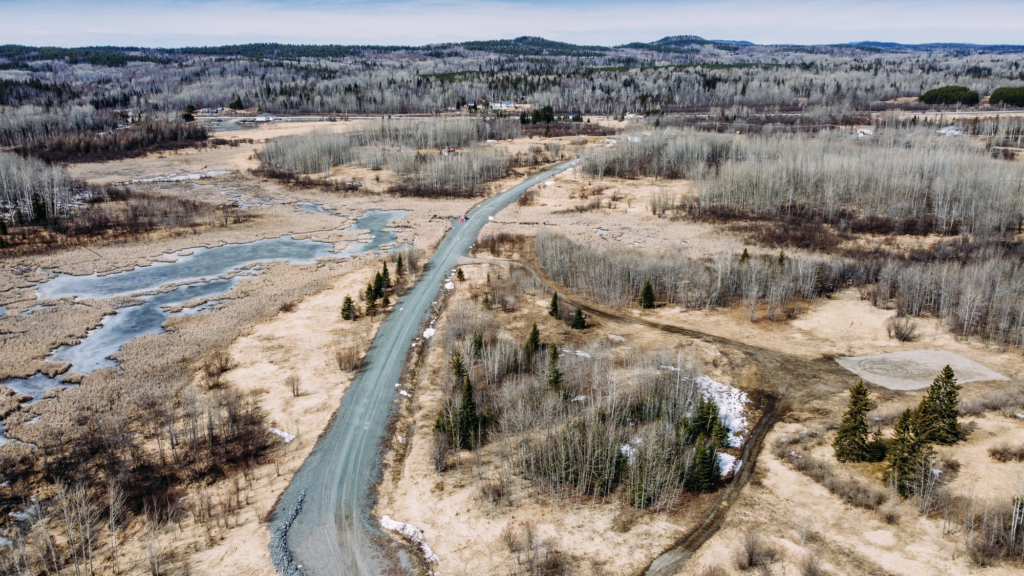Yamana Gold has reiterated a plan to minimise the amount of carbon emissions generated with the development and operation of the Wasamac gold project in Quebec, Canada, in its first study since acquiring the asset from Monarch Gold.
Monarch, prior to being taken over by Yamana Gold, had laid out plans for an underground mine at Wasamac producing 6,000 t/d, on average, with an expected mine life of 11 years. It expected to use a Rail-Veyor® electrically powered, remote-controlled underground haulage system in addition to an almost entirely electric fleet of production and development equipment.
The December 2018 feasibility study by BBA indicated the Wasamac deposit hosted a measured and indicated mineral resource of 29.86 Mt at an average grade of 2.7 g/t Au, for a total of 2.6 Moz of gold, and proven and probable mineral reserves of 21.46 Mt at an average grade of 2.56 g/t Au, for a total of 1.8 Moz of gold. The study forecast average annual production of 142,000 oz of gold for 11 years at a cash cost of $550/oz.
With drilling, due diligence and further studies, Yamana Gold, in studies forming the new feasibility level studies, has come up with baseline technical and financial aspects of the Wasamac project that, it says, underpin the decision to advance the project to production.
This has resulted in a few changes to the Wasamac plan.
For starters, the company plans to use the extract the now 1.91 Moz of reserves quicker than Monarch’s strategy, with a rapid production ramp-up in the first year followed by sustained gold production of approximately 200,000 oz/y for at least the next four years.
Including the ramp-up phase, average annual production for the first five years of operation is expected to be 184,000 oz, the company said, with life of mine production of 169,000 oz/y. Mill throughput has been increased to 7,000 t/d, on average, but the plant and associated infrastructure were being sized for 7,500 t/d. Production could start up in the December quarter of 2026, the initial capital expense was expected to be $416 million and all-in sustaining costs over the life of mine had been calculated at $828/oz.
The use of a conveyor is still within this plan, but a company spokesperson told IM that Yamana was now considering a conventional belt conveyor rather than the Rail-Veyor system.
Yamana explained: “The optimised materials handling system uses ore passes and haul trucks to transport ore from the production levels to a central underground primary crusher. The haul trucks will be automated to allow haulage to continue between shifts. From the underground crusher, ore will be transported to the crushed-ore stockpile on the surface using a 3-km-long conventional conveyor system in two segments.”
Yamana added: “Using a conveyor rather than diesel trucks to transport ore to surface reduces CO2 emissions by 2,233 t/y, equivalent to taking 500 cars off the road. Over the life of mine, the company expects to reduce CO2 emissions by more than 20,000 t.”
The aim to use electric vehicles wherever possible remains in place.
“The Wasamac underground mine is designed to create a safe working environment and reduce consumption of non-renewable energy through the use of electric and high-efficiency equipment,” the company said. “Yamana has selected electric and battery-electric mobile equipment provided that the equipment is available at the required specifications.
“Battery-electric underground haul trucks are not yet available at the required capacity with autonomous operation, so diesel trucks have been selected in combination with the underground conveyor. However, Yamana continues to collaborate with equipment suppliers with the expectation that the desired battery-electric equipment will be available before Wasamac is in operation.”
In tandem with this, the company plans to use a ventilation on demand solution and high-efficiency fans to reduce its power requirements. This will likely rely on an underground LTE network.
“Heating of the underground mine and surface facilities is designed with the assumption of propane burners, but an opportunity exists to extend the natural gas line to the project site,” it added. “Yamana has initiated discussions with the natural gas supplier and will study this opportunity further as the project advances.”
The site for the processing plant and offices is confined to a small footprint strategically located in a naturally concealed area, and the processing plant has been designed with a low profile to minimise the visual impact as well as minimise noise and dust, according to Yamana.
The primary crusher, previously planned to be located on surface, has been moved underground, with the crushed material transported to surface from the underground mining area using conventional conveyors and stored on surface in a covered stockpile to control dust.
Several design improvements to the previous Wasamac plans have also been made to reduce consumption of fresh water to minimise the effect on watersheds, according to Yamana. Underground mine water will be used in the processing plant, minimising the draw of fresh water and reducing the required size of the mill basin pond.
The Wasamac tailings storage strategy is designed to minimise environmental footprint and mitigate risk, it added.
“Around 39% of tailings will be deposited underground as paste fill and 61% of tailings will be pumped as a slurry to the filter plant located approximately 6 km northwest of the processing plant and then hauled to the nearby dry-stack tailings storage facility,” Yamana said.
Strategic phasing of the tailings storage facility design allows for the same footprint as previously planned, even with the increase in mineral reserves, the company clarified. Also, the progressive reclamation plan for this facility minimises the possibility of dust generation and expedites the return of the landscape to its natural state.











